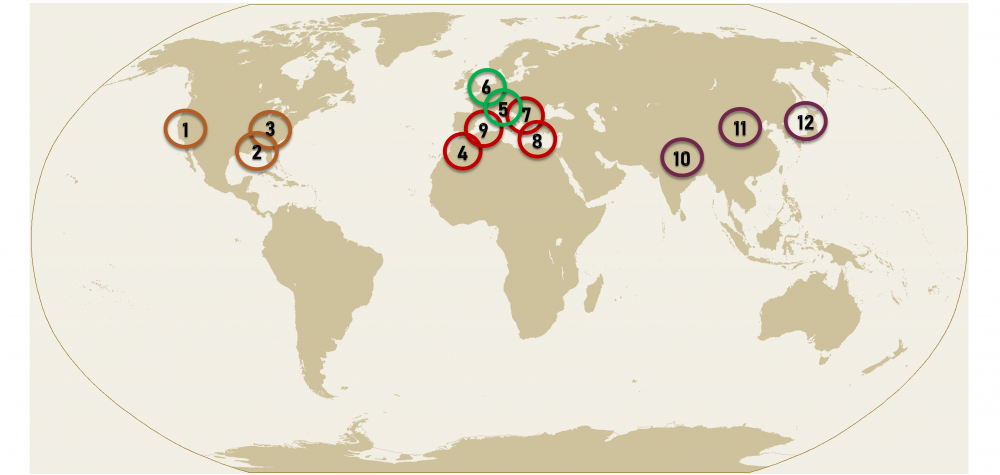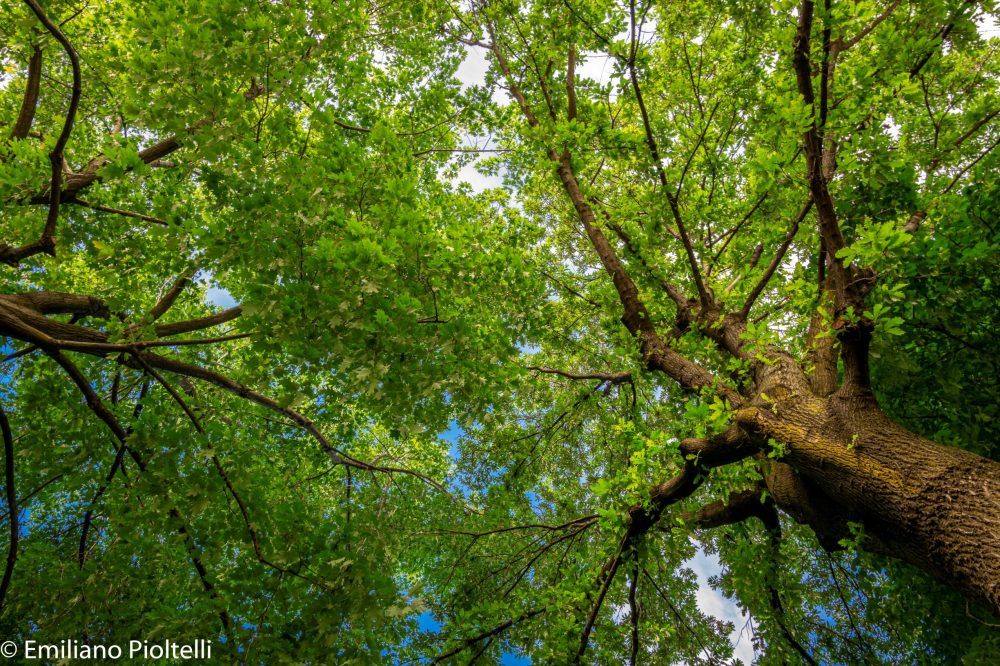BIODIVERSITY
A number of significant trees in terms of age and size from all over the world have been identified in the Vivaio. The Fumagalli Nursery, which occupied the Vivaio area for 60 years, has decided over the years to plant some tall trees to provide shade for the smaller plants. These green pillars have taken root and represent the Vivaio in all their majesty.

AMERICA
1 California incense-cedar (Calocedrus decurrens)
2 American sweetgum (Liquidambar styraciflua)
2 Southern magnolia (Magnolia grandiflora)
EUROPE
15 European silver fir (Abies alba)
6 European beech (Fagus sylvatica)
6 Common oak (Quercus robur)
6 Small-leaved linden (Tilia cordata)
MEDITERRANEAN
4 Atlas cedar (Cedrus atlantica (Endl.) Manetti ex Carrière f. glauca )
7 Common hornbeam (Carpinus betulus )
7 Teurkey oakrro (Cedrus atlantica (Endl.) Manetti ex Carrière f. glauca )
8 Mediterranean cypress (Cupressus sempervirens)
9 Holm Oak (Quercus ilex)
9 European nettle tree (Celtis australis)
ASIA
10 Himalayan cedar (Cedrus deodara)
11 Craple myrtle(Lagestroemia indica)
12 Acero palmato Japanese maple (Acer palmatum)
Atlas cedar
(Cedrus atlantica (Endl.) Manetti ex Carrière f. glauca)
Native to the Atlas mountain range in Morocco, from which it takes its name and where it forms dense forests, this tree was used extensively in the gardens of European villas from the 17th century onwards and is now a distinctive feature of the urban landscape thanks to its large crown, which can be over 30 m high. The Phoenicians were among the first people to use its valuable wood to build the boats that made them famous, and still today this wood is appreciated all over the world.
Inside the Vivaio Bicocca there are some impressive specimens, with an estimated age of around 60 years.
European beech
(Fagus sylvatica L.)
Although undemanding in terms of soil type, the European beech prefers a humid atmosphere, with well-distributed rainfall throughout the year and frequent mists, and well-drained soil. The beech forest is very dark, as the sun barely reaches the ground. Young beech trees prefer shade and can have bark problems if they are exposed to too much direct sun. The etymology of the name probably derives from the Greek word phagein, which means “to eat”, as in the past the beech tree was a very important source of food for both humans and animals, thanks to its edible leaves but above all to its fruit, the beech nut, which can be eaten raw or roasted or made into oil by pressing.
The specimens present in the Vivaio Bicocca are between 40 and 50 years old.
American sweetgum
(Liquidambar styraciflua L.)
Also known as American storax, it is a deciduous tree native to the humid temperate zones of North America and the humid mountainous regions of Mexico and Central America. It is one of the most important and valuable forest trees in the southeastern United States and is widely used as an ornamental tree, which can be seen in the urban rows of our cities. It is recognisable by the shape of its leaves, which are warmly coloured from red to yellow in autumn, and its hard, pointed fruits. The species was introduced to Europe in 1681 by John Banister, a collector who planted it in the gardens of his palace in Fulham, London, England.
In the Vivaio Bicocca you can admire a magnificent specimen that is about 70 years old and whose natural habit is particularly appreciated. It has been able to develop thanks to the space and light available to it, as well as the fact that it has fortunately been left to grow undisturbed for several years.
Ginkgo
(Ginkgo biloba L.)
Commonly known as ginkgo, also known as maidenhair tree, it is the only living species of the taxonomic group to which it belongs, as the other species belonging to its group have become extinct. It is extremely similar to fossils dating back 200 million years and is therefore considered a ‘living fossil’. Native to China, the tree is only found in nature as a cultivated species and is nowadays widely used as an ornamental species. Extreme examples of the ginkgo’s tenacity can be seen in Hiroshima, Japan, where six trees were among the few living beings in the area to survive the atomic bomb, and are still alive today.
It is also a plant of great medicinal interest due to the effective anti-neurodegenerative properties of its leaves.
At the Vivaio Bicocca there are a number of specimens in rows, whose leaves are gilded in autumn.

The oak grove
(Quercus cerris L., Quercus rubra L.)
This area of the Vivaio Bicocca is characterised by the presence of turkey oaks and red oaks, with mature specimens over 60 years old, as well as other oak species.
As far as the Turkey oak is concerned, this typically Mediterranean tree also extended into northern Europe around 120,000 years ago and is now widely used and naturalised in most parts of Europe. The second species, on the other hand, is native to North America, was introduced to Europe in the 1700s and has become naturalised in much of Europe, where it grows mainly on the edges of forest reserves in Europe, where the availability of light and the dispersal of seeds by animals are the most necessary components for the longevity and survival of the species. The high use of this tree in Europe is mainly based on its economic productivity as a source of fast-growing timber.
The Vivaio Bicocca also hosts other plant species that characterise the landscapes of the Mediterranean territory, such as the cypress (Cupressus sempervirens L.) and the holm oak (Quercus ilex L.), as well as large melliferous plants such as the linden (Tilia cordata Mill.).
Insects and pollinators abound in the nursery: they are the protagonists of FUNCTIONAL BIODIVERSITY. Discover their importance in the dedicated news.
